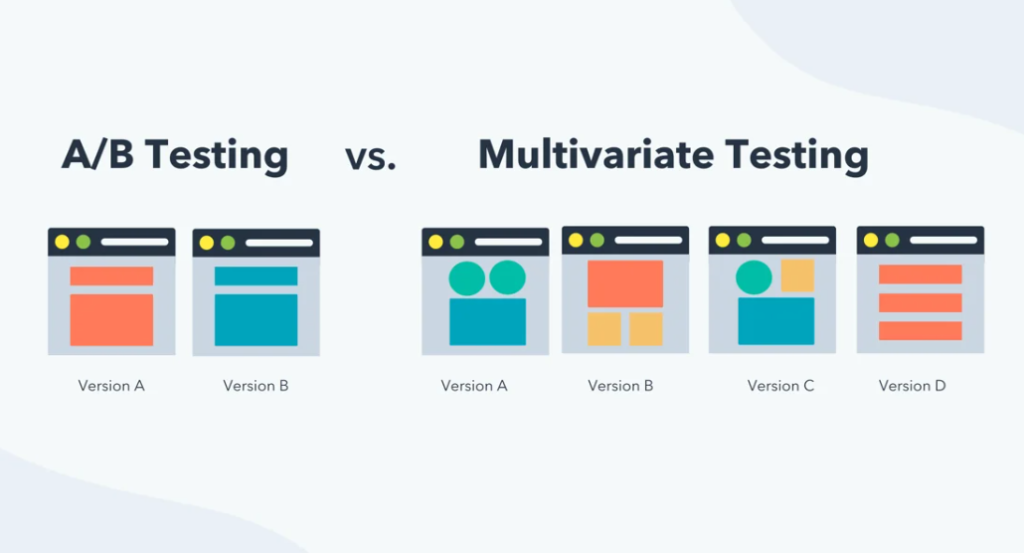In the digital marketing realm, conversion optimisation is the cornerstone of success. It’s about making the most out of your existing traffic and leads, ensuring that every visitor has the highest chance of converting into a customer. Among the myriad of strategies and tools available, A/B testing and multivariate testing stand out as two of the most powerful methods for website and campaign optimisation. But how do you know which is right for you?
Understanding A/B Testing
A/B testing, often referred to as split testing, is the process of comparing two versions of a webpage or app against each other to determine which one performs better. Essentially, it involves changing one variable (such as a headline, button color, or page layout) to see which version leads to a higher conversion rate. A/B testing is praised for its simplicity and effectiveness, especially in scenarios where one is looking to test major changes.
Benefits of A/B Testing:
- Simplicity: Easy to set up and understand, making it accessible for businesses of all sizes.
- Effectiveness: Direct comparison makes it clear which version is more successful in achieving the desired outcome.
- Flexibility: Can be used to test almost any element that might affect user behavior.
Limitations:
- Single Variable Testing: Only one variable can be tested at a time, which may not capture the complex interactions between different website elements.
- Time-Consuming for Multiple Variables: Testing multiple variables sequentially can take a significant amount of time.

Understanding Multivariate Testing
Multivariate testing takes A/B testing a step further by allowing you to test multiple variables simultaneously. This method examines how different elements interact with each other, providing a more comprehensive view of how changes can impact user behavior.
Benefits:
- Complex Insights: Offers insights into how multiple variables interact, which can lead to more nuanced optimisations.
- Efficiency: Tests several hypotheses in the same timeframe, making it faster than A/B testing when dealing with multiple variables.
Limitations:
- Traffic Requirements: Needs a higher volume of traffic to achieve statistical significance due to the complexity of the tests.
- Analytical Complexity: Analysing the results can be more complicated and may require more sophisticated tools or expertise.

A/B Testing vs. Multivariate Testing: Key Differences
While A/B testing provides a straightforward, binary insight into which version of a single variable performs better, multivariate testing allows for a deeper dive into how different elements interact with one another. The choice between the two often boils down to the specific needs of your campaign:
- A/B Testing is best suited for testing major changes and straightforward hypotheses where the goal is to identify the better option between two variants.
- Multivariate Testing is ideal when the objective is to understand how various elements of a page work together and influence user behavior.
Deciding Between A/B Testing and Multivariate Testing
The decision hinges on several factors:
- Website Traffic: Multivariate testing requires more traffic due to the complexity of the tests.
- Stage of Optimisation: Early stages might benefit more from A/B testing to establish a baseline, while more mature stages could leverage multivariate testing for fine-tuning.
- Specific Goals: If the goal is to optimise a single conversion metric, A/B testing might suffice. If you aim to explore how different elements affect user behavior in conjunction, multivariate testing could be more appropriate.
Implementing A/B and Multivariate Tests: Best Practices
Regardless of the method chosen, following best practices is crucial for success:
- Define Clear Objectives: Knowing what you want to achieve helps in designing effective tests.
- Ensure Statistical Relevance: Use appropriate sample sizes and run tests long enough to achieve statistically significant results.
- Analyse and Act on Data: Interpret the results accurately and make data-driven decisions to optimie further.

Both A/B and multivariate testing are invaluable tools in the marketer’s arsenal, each with its strengths and use cases. The decision on which to use depends on your specific goals, the complexity of the elements you wish to test, and the amount of traffic your website receives. By understanding the nuances of each testing method, marketers can make informed decisions that steer their optimisation strategies toward success.
In the rapidly evolving digital landscape, embracing a culture of testing and optimisation is more critical than ever. Whether through A/B testing or multivariate testing, the key is to remain committed to learning from your data and continuously seeking ways to enhance the user experience and conversion rates.


